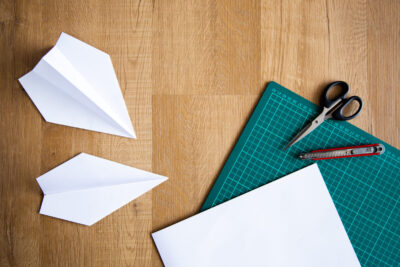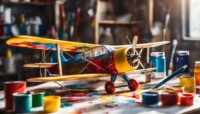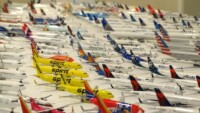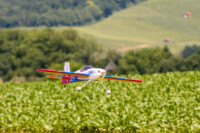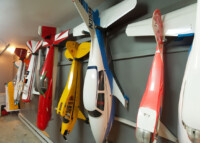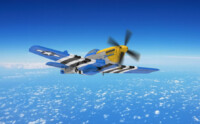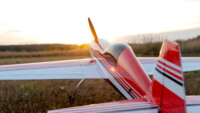What is the Best Paper for a Paper Airplane?
7 November 2023 | Updated on January 03, 2024
When it comes to creating the perfect paper airplane, choosing the right paper is essential. The ideal paper should have specific characteristics that contribute to aerodynamics, durability, and overall flight performance. So, what exactly is the best paper for a paper airplane?
There are several factors to consider when selecting the ideal paper for your paper airplane. Firstly, the weight of the paper is important. The paper should be light enough to allow for easy folding and maneuverability, but not so light that it lacks stability during flight. Secondly, the size of the paper can influence the overall design and flight characteristics of the airplane. Finally, the type of paper used can also make a difference in terms of durability and overall performance.
Experimentation has shown that regular 8.5 x 11-inch all-purpose printer paper or colorful construction paper are often recommended choices. Construction paper, in particular, is thicker and heavier, which can enhance the aerodynamics and durability of the paper airplane.

Key Takeaways:
- Choosing the right paper is crucial for creating the best paper airplane.
- The ideal paper should have a balanced weight, allowing for easy folding and stability during flight.
- Size and type of paper also play a role in the performance and durability of the paper airplane.
- Regular all-purpose printer paper or colorful construction paper are commonly used options.
- Construction paper offers improved aerodynamics and durability for paper airplanes.
How to Make the Best Paper Airplane
Making a paper airplane is a fun and engaging activity that can be enjoyed by people of all ages. Whether you’re a beginner or a seasoned paper plane enthusiast, creating the best paper airplane involves a few simple steps. By following these instructions, you’ll be able to fold a paper airplane that soars through the air with ease.
Folding Instructions
- Start with a rectangular piece of paper. An 8.5 x 11-inch sheet is commonly used, but you can experiment with different sizes for different effects.
- Place the paper on a flat surface, oriented vertically (long side facing up).
- Fold the top right corner diagonally, aligning it with the left edge of the paper to create a triangle.
- Repeat the previous step with the top left corner, folding it diagonally to meet the right edge of the paper.
- With the triangle shape facing upwards, fold the top edge down to meet the bottom edge, creating a smaller triangle at the top.
- Take the left and right bottom corners and fold them up to meet the top point of the triangle.
- Flip the paper over so that the folds are on the underside.
- Again, fold the left and right bottom corners up to meet the top point of the triangle.
- Finally, fold the entire plane in half along the centerline, creating the body of the airplane.
Once you have completed these folding instructions, you’ll have a well-designed paper airplane ready for flight. Experiment with different paper weights and sizes to see how they affect the performance of your airplane. Remember to have fun and enjoy the process of creating and flying your very own paper airplane!
“Making paper airplanes is not just about folding paper. It’s about tapping into your creativity and exploring the principles of flight.” – Anonymous
Tips for Success
- Ensure that your folds are crisp and precise for the best aerodynamic performance.
- Experiment with different designs and folding techniques to find the one that works best for you.
- Consider adding small adjustments, such as bending the wings slightly upward, to enhance stability and flight distance.
- When launching your paper airplane, give it a gentle toss, keeping it level with the ground. Avoid throwing it too hard or at an upward angle, as this can lead to unstable flight.
- Practice makes perfect, so keep folding and flying until you achieve the desired results.
With these step-by-step instructions and helpful tips, you’re well-equipped to make the best paper airplane. So, grab a sheet of paper and let your imagination take flight!
Experimenting with Different Paper Weights
When it comes to creating the best paper airplane, the choice of paper weight can have a significant impact on its performance. Conducting experiments with different paper weights allows us to understand how weight affects factors like distance and flight time. By folding various designs using papers of different weights, we can gather data and analyze the results to gain valuable insights.
During the paper airplane experiment, measurements need to be taken to determine how each paper weight affects the flight characteristics. By recording the distance traveled or the time aloft for each paper weight, we can create a comprehensive analysis of the performance differences between them. This data serves as the foundation for understanding weight’s role in paper airplane flight.
Comparing the performance of paper airplanes made with different paper weights provides us with valuable insights into aerodynamics. By analyzing the data collected, we can observe how weight influences factors such as lift and drag. This information helps us understand the impact of paper weight on the flight trajectory and overall performance of the paper airplane.
By conducting experiments and analyzing the results from different paper weights, we can uncover valuable information about the ideal paper weight for a paper airplane. This data-driven approach allows us to make informed decisions when choosing the paper for our own creations, optimizing their flight characteristics for maximum performance.

Analyzing Paper Airplane Experiment Results
Once the paper airplane experiment has been conducted, it is essential to analyze the collected data to draw meaningful conclusions. Data analysis allows us to gain insights into the impact of different paper weights on the flight characteristics of paper airplanes. One effective way to analyze the results is by creating graphs to visualize and compare the measurements.
Graphing the paper airplane experiment results enables us to identify trends and patterns in the data. By plotting the distance or time aloft against the paper weights used, we can observe any relationships or correlations. This visual representation helps us draw meaningful insights and make comparisons between different paper weights.
“Graphing the experiment results is a powerful tool for understanding the impact of paper weight on paper airplane flight. It allows us to see how different weights affect the variables we measured, such as distance or time aloft.”
Example Graph
Below is an example graph illustrating the relationship between paper weight and distance traveled by paper airplanes:
| Paper Weight (grams) | Distance Traveled (meters) |
|---|---|
| 60 | 5 |
| 70 | 7 |
| 80 | 8 |
| 90 | 9 |
| 100 | 10 |
In the example table, we can observe that as the paper weight increases, the distance traveled by the paper airplane also increases. This suggests a positive correlation between weight and flight distance. However, further analysis and comparison with other variables such as design and environmental conditions are needed to draw definitive conclusions.

Tips for Maximum Paper Airplane Performance
To achieve maximum performance with your paper airplane, there are several tips and techniques you can try. By considering these factors, you can improve the flight characteristics and achieve maximum distance with your paper airplane.
1. Choose the Right Paper
The choice of paper can greatly affect the performance of your paper airplane. While regular 8.5 x 11-inch all-purpose printer paper works well for most designs, you may also experiment with colorful construction paper. Construction paper is thicker and heavier, which can improve the aerodynamics and durability of the paper airplane. Consider the size, weight, and type of paper that best suits your design and desired flight characteristics.
2. Proper Folding Technique
The folding technique plays a crucial role in achieving maximum performance with your paper airplane. Follow the folding instructions carefully, ensuring crisp and accurate folds. Take your time to create clean folds and secure them with firm creases. Pay attention to the symmetry and alignment of the wingtips, as well as the center of gravity. A well-folded paper airplane will have better stability and glide through the air more efficiently.
3. Experiment with Designs
Don’t be afraid to experiment with different designs to find the one that suits your needs best. Try folding various designs, such as the classic dart or the more intricate glider. Each design has different flight characteristics and can excel in different areas, such as distance or acrobatics. By experimenting with different designs, you can discover the one that performs best for your desired flight goals.
| Design | Flight Characteristics |
|---|---|
| Classic Dart | Long-distance |
| Glider | Smoother flight and acrobatics |
| Stunt Plane | Loops and tricks |
Remember, practice makes perfect when it comes to paper airplane performance. Take the time to refine your folding technique, experiment with different designs, and observe how each adjustment affects the flight characteristics. By applying these tips and techniques, you can achieve maximum distance and enjoyment with your paper airplane.
The World Record for Paper Airplane Flight
The world record for the farthest-traveling paper airplane was set by John Collins, also known as “The Paper Airplane Guy.” In 2012, Collins threw a paper airplane named “Suzanne” that traveled an astounding distance of 226 feet and 10 inches. This impressive achievement earned him a place in the Guinness World Records.
Collins’ record-breaking flight was the result of meticulous design and testing. He spent years perfecting the art of paper airplane folding, experimenting with various designs and techniques. Through his extensive research and trial and error, he discovered the optimal combination of weight, shape, and balance to achieve maximum distance.
“Making a paper airplane that can fly long distances requires attention to detail and a deep understanding of aerodynamics,” Collins said. “It’s all about finding the right balance between lift and drag, and throwing with the perfect angle and force.”
Collins’ success serves as an inspiration for paper airplane enthusiasts and encourages them to reach new heights in their own endeavors. While most of us may not break world records, we can still apply his tips and techniques to improve our own paper airplane flights. Paying attention to factors such as weight distribution, wing shape, and throwing technique can help achieve longer flights and greater enjoyment.
Tips from the World Record Holder
- Experiment with different paper weights to find the optimal balance between lightness and stability.
- Create a symmetrical design and ensure proper weight distribution for improved aerodynamics.
- Be mindful of the angle and force used when launching the paper airplane to maximize flight distance.
- Practice folding techniques to achieve precise and consistent creases, resulting in a cleaner flight.
By following these tips and incorporating elements from John Collins’ record-breaking flight, you can elevate your paper airplane-building skills and enjoy the thrill of seeing your creation soar through the air.
Conclusion
After conducting extensive research and experimentation, it can be concluded that the best paper for a paper airplane goes beyond just its weight. While weight does play a role in flight performance, other factors such as design, aerodynamics, and environmental conditions also significantly impact the overall success of a paper airplane flight.
During our investigations, regular 8.5 x 11-inch all-purpose printer paper and colorful construction paper emerged as the preferred choices for paper airplanes. Construction paper, in particular, with its added thickness and weight, improves both aerodynamics and durability, resulting in enhanced flight performance.
It is important to remember that the forces of lift and drag, influenced by the shape of the airplane, have a more significant impact on flight performance than weight alone. Additionally, understanding the role of gravity, which remains constant for all objects regardless of mass, helps explain why weight does not play a major role in paper airplane flight.
To achieve maximum performance with a paper airplane, it is advisable to consider factors such as proper folding techniques, center of gravity, lift, and throwing technique. By optimizing these elements, you can improve flight distance and overall success.

FAQ
What is the best paper for a paper airplane?
According to sources, regular 8.5 x 11-inch all-purpose printer paper or colorful construction paper is recommended.
How do I make the best paper airplane?
Here is a basic guide: Fold the paper in half lengthwise, then unfold. Fold the top edges down to the center crease. Fold the top triangle down to create a nose. Fold the wings down at a slight angle. Adjust the tail for balance. Your paper airplane is ready to fly!
How can I experiment with different paper weights for a paper airplane?
By folding different designs using various paper weights, you can test factors like distance or time aloft. Collect data and analyze the results to understand how paper weight affects the performance of a paper airplane.
How do I analyze the results of a paper airplane experiment?
Create a graph to plot measurements and identify trends. Compare different paper weights to draw conclusions about the impact of weight on flight characteristics.
Does the weight of the paper significantly affect the flight of a paper airplane?
No, the forces of lift and drag, as well as gravity, play a larger role in flight performance. Understanding these factors can explain why weight alone does not have a significant impact on paper airplane flight.
How can I maximize the performance of a paper airplane?
Consider factors like paper weight, design, center of gravity, lift, and throwing technique. Finding the ideal paper, designing for proper aerodynamics, and throwing in the right conditions can contribute to a successful long-distance flight.
What is the world record for paper airplane flight?
The current record for the farthest-traveling paper airplane was set by John Collins. Paper weight, design, and throwing technique were crucial for the record-breaking flight.
What is the conclusion regarding the best paper for a paper airplane?
Through experimentation and analysis, it has been determined that paper weight alone does not have a significant impact on flight distance or time aloft. Therefore, choosing a paper that is readily available and suitable for folding, along with considering other performance-enhancing factors, can result in a successful paper airplane flight.
